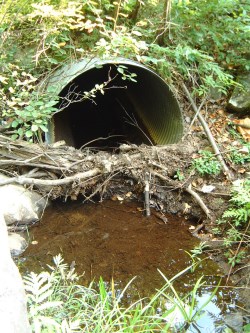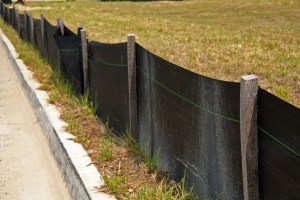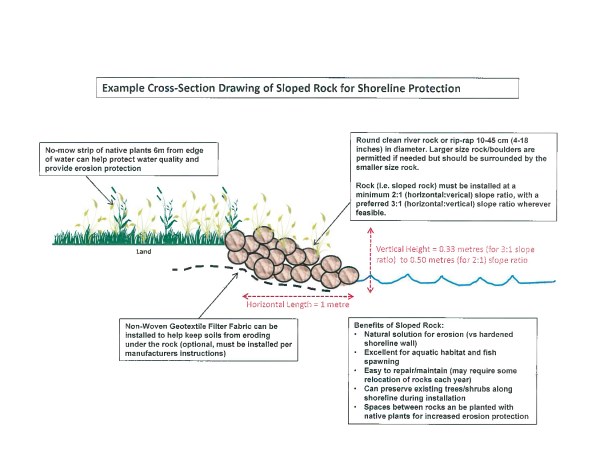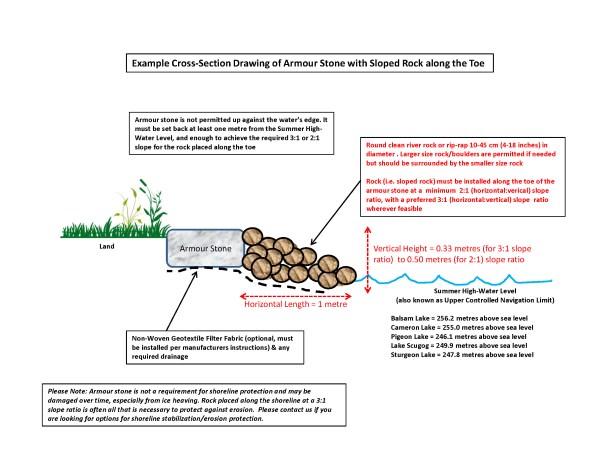Your application must include:
- A copy of the deed or tax bill to prove ownership
- A registered plan/survey (if available)
- Location map showing nearest intersections (e.g. Google map)
- Detailed letter/report describing the proposal
- Volume and origin of any fill material from an off-site source for septic systems, driveways, foundations, etc.
- One set of plans/drawings (paper copies must be no larger than 11" x 17")
- Signed letter of authorization from the owner to applicant (if applicant is not owner)
- Statement of agreement from any persons sharing right-of-ways, easements, etc. (if applicable)
- Colour photographs of entire shoreline taken in summer (if shoreline works or boathouse proposed)
- Sediment and erosion control proposal (for infrastructure, commercial/industrial/multi-residential)
- Replacement of existing septic systems in the same location, outside of any flooding hazard
Additional application requirements can include the following, depending on the features present on your property:
- Environmental impact study
- Wetland compensation plan
- Elevation/topographic survey
- Geotechnical and/or slope stability study
- Engineered drawings
- Flood plain modelling/mapping
- Stream bank erosion analysis
- Geomorphologic assessment
- Etc.




